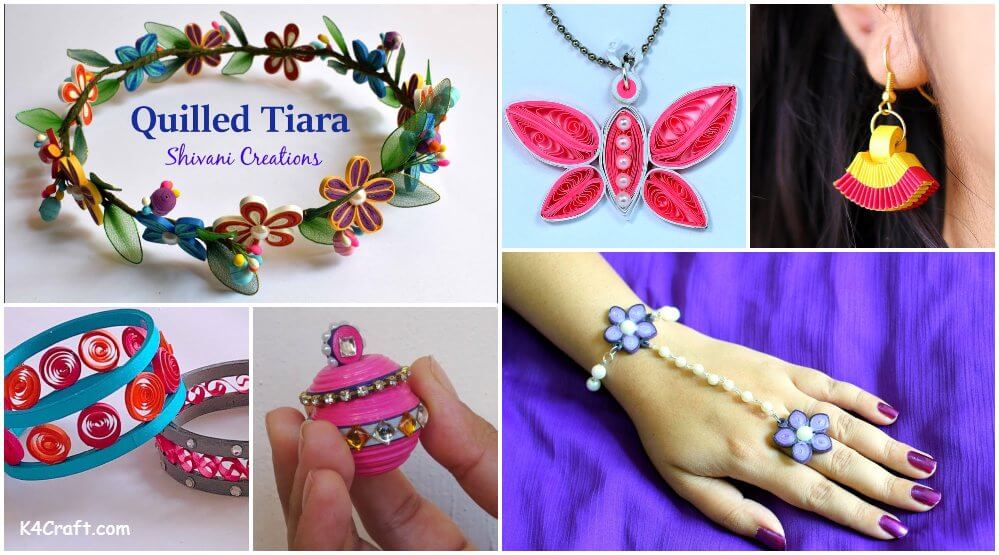

When you think of jewelry, you think of the most basic items, bronze, iron, steel, gold, silver, and diamond. For long, the concept of making jewelry has been narrowly classified into a group of metal people believe to be visually appealing. However, with the changing trend and people’s perception of beauty, the definition of jewelry has significantly changed. Today, people are not afraid to experiment with different materials to create unique and beautiful jewelry.
There is no limit to what you can use to make a piece of jewelry. Even the most unconventional materials can be used to create stunning jewelry. The only thing you need is creativity and imagination. Here are some tips on how you can incorporate unconventional materials in your jewelry making:
1) Think outside the box – When it comes to jewelry making, don’t be afraid to think outside the box. There are no set rules or guidelines on what material you can or cannot use. Be open to trying new things and experimenting with different materials.
2) Get inspired by nature – One of the best sources of inspiration for jewelry making is nature. Look around you and find things in nature that you can use to create your unique piece of jewelry.
3) Repurpose old items – Another great way to incorporate unconventional materials in your jewelry-making is to repurpose old items. If you have any old pieces of jewelry that you no longer wear, consider giving them new life by incorporating them into new pieces.
4) Think outside the traditional shapes and sizes – Don’t be afraid to experiment with different shapes and sizes when it comes to jewelry. There are no set rules about what a piece of jewelry should look like. You can be as creative as you want regarding the shape and size of your jewelry.
5) Have fun – The most important thing to remember when incorporating unconventional materials in your jewelry making is to have fun. Don’t take yourself too seriously, and enjoy the process of creating something new and beautiful.
So, are there any relevant examples?
Here are a few things that you can use to start making jewelry from items that are not the most widely used in jewelry making:
Rhodochrosite: You probably hadn’t even heard the name of this metal. Rhodochrosite is a manganese carbonate mineral, and it has a beautiful pink color. It is found in Uruguay, Argentina, and Peru. Jewelry made from Rhodochrosite is rare and is a perfect example of something you can use that isn’t conventional.
Rutilated Quartz: This gemstone is very popular in jewelry making. It has needle-like inclusions of rutile that give it a unique appearance. It is found in Brazil, Madagascar, Russia, and the United States.
Sugilite: Sugilite is a violet sugilite mineral with a beautiful purple color. It is found in Canada, China, Japan, and the United States. Jewelry made from sugilite is quite rare, and it would be a great way to incorporate an unconventional material into your jewelry making.
Tourmaline: Tourmaline is a semi-precious gemstone that comes in various colors. It is found in Australia, Brazil, Madagascar, Mozambique, Nigeria, Sri Lanka, and the United States. Tourmaline is a great example of an unconventional material that can be used in jewelry making.
Porcelain: Porcelain is a type of ceramic found at a high temperature. It is found in China, Japan, and Russia. Porcelain is a great example of an unconventional material that can be used in jewelry making.
Concrete: If you have never heard of concrete jewelry, you are not alone. Concrete is not a typical material used in jewelry making, but it can be used to create beautiful and unique pieces. Concrete is found in various places, including the United States, France, Italy, and Spain.
Plastic: Plastic is another unconventional material that can be used in jewelry making. Plastic is found in various places, including the United States, China, and Japan. Plastic is a great example of an unconventional material that can be used in jewelry making.
Things to pay proper attention to when working with unconventional metals:
One of the first things you need to do when working with unconventional metals is to see if it has skin allergies. To test that, put a very small amount on the skin and see if there is any reaction. Second, when working with these metals, it is important to use gloves so that the metal does not come in contact with your skin for a long time. Lastly, clean the tools you used as soon as possible after working with the metal. These are just some of the things to take note of when working with unconventional materials for jewelry making.
Following these tips, you can easily incorporate unconventional materials in your jewelry-making and create unique and beautiful pieces. So, don’t be afraid to experiment and have fun with it!
